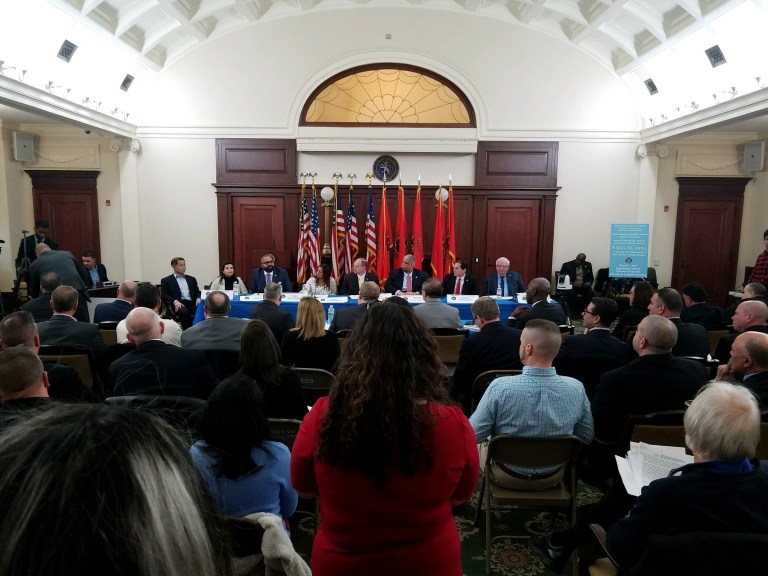
Long Island Rail Road officials said they were taking measures to improve the system’s capacity and flexibility at a hearing last Friday, where they faced questions from Long Island’s state senators over the agency’s performance and some criticism from union leaders.
The hearing in Mineola was the first of a set of hearings planned by six Long Island state senators and the chairs of two state Senate committees, which want to get answers for what many see as the LIRR’s poor performance and come up with solutions.
LIRR President Phillip Eng said that as ridership continues to grow, with just shy of 90 million people riding the LIRR last year, the nation’s largest commuter railroad must evolve to increase both its flexibility and capacity.
“As Long Island continues to grow, so must our system,” Eng said.
Eng said the LIRR has accelerated modernizing and upgrading the system while making “unprecedented” investments in the railroad, including the third track project that will add almost 10 more miles of track between Floral Park and Hicksville and eliminate seven grade crossings.
He said the LIRR has made considerable progress in the LIRR Forward plan, which calls for installing new switches, clearing overgrown vegetation and other improvements.
Eng also cited the double track project in Suffolk County, which was completed 15 months ahead of schedule, improvements to Jamaica Station, and the long-delayed East Side Access project, which would enable the LIRR to deliver passengers from the main line to a new station under Grand Central Terminal.
“We have demonstrated that we can be good neighbors, get projects done on time and think outside of the box and support our customers,” Eng said.
The East Side Access project was originally expected to cost $3.5 billion in the late 1990s, but its cost has steadily risen to more than $11 billion while its opening date has continued to be pushed back. The current expected completion date is 2022.
Asked about the East Side Access project, Janno Lieber, the chief development officer of the Metropolitan Transportation Authority, which oversees the LIRR, said several ongoing contracts and changes convoluted and delayed the project.
“East Side Access was changes, changes, changes. We’re done with that,” Lieber said. “We are getting ready to open an eight-track railroad terminal that’s going to benefit Long Islanders in the center of the most job-intensive part of the United States of America.”
Lieber also said, however, that between the third track project and East Side Access, the MTA needs about $1.5 billion more altogether to finish the projects.
Anthony Simon, the leader of the SMART Union that includes sheet metal, air, rail and transportation workers, said management mistakes have gone without consequence.
He also said there has been a lack of communication with labor unions and that the LIRR should not rely on outside contractors.
“Communication is broken down with the most experienced people in the industry, and that is the labor leaders who have the hundreds of years of experience,” Simon said.
LIRR officials also asked about safety, especially in wake of three people being killed after driving around lowered gates and being hit by two trains, as well as improved disability access.
Eng said the LIRR has installed reflective delineators as well as road striping on streets and has scheduled seven grade crossings for removal. One of them is the School Street crossing, the site of the accident.
Turning to disability access, Eng said LIRRCare, which helps customers with limited mobility, has assisted 1,100 people so far. More than 100 stations are also now ADA- accessible, with ones like Wantagh, Flushing and Floral Park to be upgraded soon as well.






